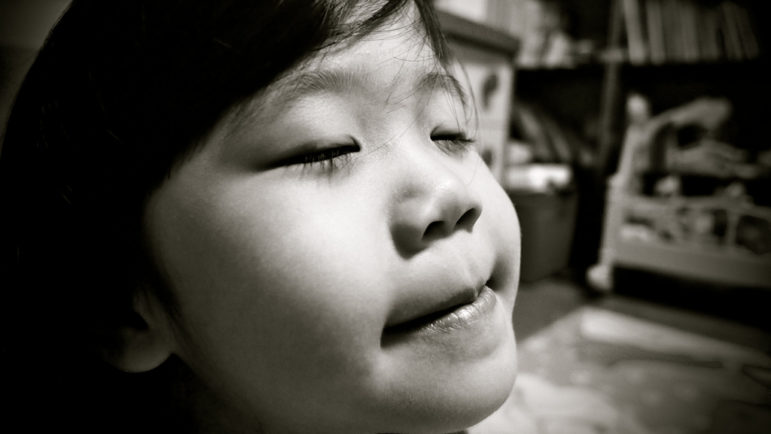
Angelina Koh
Wellness culture is ubiquitous these days. From the proliferation of matcha cafes to the growing number of workplaces offering nap rooms, it seems everyone in our city is looking for some inner peace. And who can blame them? With our fast-paced lifestyle and the hyper-connectivity of modern life, it’s no wonder New Yorkers want to unwind.
But while these trends have caught on in more affluent parts of the city, many are not able to enjoy the benefits of a moment to clear their mind. This can have a devastating impact on people’s physical and mental well-being – especially for low-income and minority students in neighborhoods I represent like East New York, many of whom cope with the psychological effects of poverty and violence.
In order to close the Wellness Gap, we need to start early. Forming healthy habits during childhood leads to better life outcomes. That’s why I believe New York City should introduce mindfulness in our city’s classrooms.
I understand this may not seem like a priority. There are many chronic issues plaguing our school system that deserve our attention, from widening racial disparities to lagging performance. A recent report found that the school funding formula in New York is one of the most inequitable in the U.S.
Counter-intuitively, I believe that’s an argument for wellness education, not against. Research has consistently shown that it’s a low-cost solution can help students thrive, boosting test scores, improving focus, and reducing behavioral issues. And it makes sense, when you think about it: students are better learners when they are not plagued by chronic stress.
But it’s not just about performing well in school. A well-designed wellness curriculum would ensure children are developing skills and qualities that will serve them for the rest of their lives. Sara Lazar, a Harvard neuroscientist, conducted an experiment where she took MRI scans of people’s brains, then had them meditate once a week for 30 minutes. After 8 weeks, she took another scan and found that certain parts of the participants’ brains had gotten larger: the hippocampus, which regulates learning and memory, and the temporoparietal junction, which regulates empathy and compassion.
Put simply, setting aside time for meditation each week makes people better learners and better human beings. Isn’t that what we want for all our children?
Guided meditation could also curb behavioral problems, disrupting the school-to-prison pipeline affecting so many black and Latino students. In the last school year, 85 percent of New York City’s students suspended from school were black or Latino, and black and Latino students were also suspended for longer on average than their white peers. Students who are suspended or expelled for behavioral infractions are three times more likely to enter the juvenile justice system the following year, beginning a vicious cycle of poverty and incarceration that follows them for the rest of their lives.
Instead of relying on the same disciplinary practices that perpetuate these racial inequities, we should be using wellness to offer troubled students a different path. Other schools have had success with this approach. At Robert Coleman Elementary School in West Baltimore, a predominantly black and low-income area, the administration chose to send kids who were misbehaving to a meditation room, instead of the principal’s office. Since the school instituted the new policy, there have been zero suspensions.
Get the best of City Limits news in your inbox.
Select any of our free weekly newsletters and stay informed on the latest policy-focused, independent news.
Wellness in schools is such a common-sense proposal that programs have already been adopted in parts of England and U.S. cities such as Washington D.C. and Philadelphia. So what are we waiting for?
1.1 million students pass through the doors of New York’s public schools every day. Over 800,000 of them live in poverty. Even worse, according to a recent report from the New York Times, 100,000 students in the last school year lived in temporary housing, a record high. Some deal with the trauma of an incarcerated relative, while others are estranged from their families altogether.
Conducting deep breathing exercises and teaching students how to more effectively regulate their emotions are obviously not a panacea for the deeper problems affecting our students. We must do more to combat these savage inequalities, as the education advocate Jonathan Kozol famously termed the stark racial and class disparities in U.S. public schools.
But the evidence is clear: equipping students with the tools to be more present in and out of the classroom could make a world of difference. So maybe it’s time we updated our conception of wellness, from yoga mats and incense to desks and chalkboards.
A Democrat first elected in 2013, Espinal is the representative for the 37th Council District (East New York, Cypress Hills, Bushwick and Brownsville).









2 thoughts on “Opinion: New York City Students Need Wellness Education”
I could not agree more! Bravo to you! I have been teaching mindfulness in schools for the past 10 years and I can attest to its value. We are giving kids life skills to not only cope but to thrive! We need more advocates for these types of wellness programs. These programs are not expensive to implement (much, much less expensive than the costly interventions we need when the student is in crisis) and the benefits are immeasurable!
Pingback: Opinion: New York Metropolis College students Want Wellness Schooling – Metropolis Limits | Cheap Knee Braces